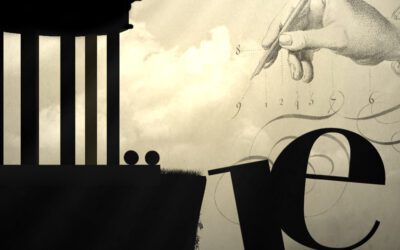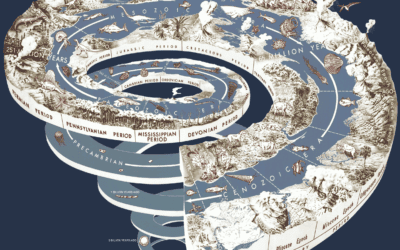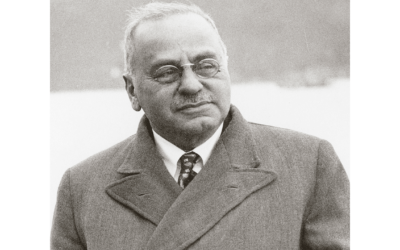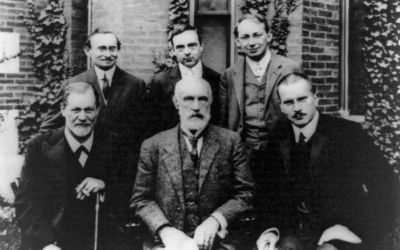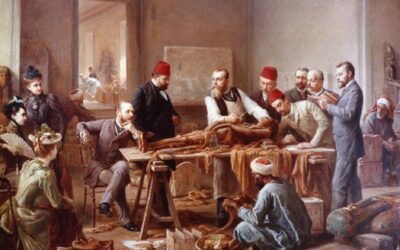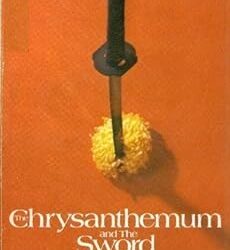The Psychological Revolution of Writing: How Scratches on Clay Rewired the Human Mind The First Writer's Dilemma: A Technology Without Users Picture this scene: Somewhere in ancient Mesopotamia, around 3200 BCE, a person has just made marks on wet clay that represent grain inventory. They've invented writing. But here's the profound psychological moment we rarely consider – this inventor now faces an extraordinary problem. They've created a revolutionary technology that's completely useless unless they can...
Psychology History

Understanding the roots of psychological thought illuminates the path to deeper self-awareness and healing. This category explores the rich tapestry of psychological development through a uniquely Jungian lens, tracing how ancient wisdom traditions, pioneering thinkers, and transformative discoveries have shaped our understanding of the human psyche.
Here you’ll discover how Jung’s revolutionary concepts emerged from and built upon earlier psychological traditions, from the philosophical foundations laid by figures like Heraclitus and Nietzsche to the empirical breakthroughs of his contemporaries. We examine the historical context that gave birth to analytical psychology, exploring how Jung’s encounters with diverse cultures, mythologies, and spiritual traditions informed his understanding of the collective unconscious and universal archetypes.
Our historical explorations reveal how psychological insights have evolved across civilizations—from ancient Greek concepts of the soul to medieval alchemical traditions that Jung saw as early maps of individuation. We trace the development of key Jungian concepts through their historical origins, showing how ideas like the shadow, anima/animus, and the Self have deep roots in human culture and mythology.
These historical perspectives offer more than academic interest; they provide context for understanding how psychological healing has always been central to human experience. By examining the past, we gain insight into timeless patterns of growth, transformation, and the eternal human quest for wholeness that remains as relevant today as it was centuries ago.
Whether you’re a fellow therapist, someone engaged in personal analysis, or simply curious about the historical foundations of depth psychology, these explorations will deepen your appreciation for the profound wisdom embedded in Jung’s approach to understanding the human psyche. For deeper study, we recommend exploring the C.G. Jung Institute archives and the International Association for Analytical Psychology resources.
📍 Visit Taproot Therapy Collective at
2025 Shady Crest Dr. Suite 203, Hoover, AL 35216
📞 (205) 598-6471
🌐 Web: GetTherapyBirmingham.com
🎧 Podcast: gettherapybirmingham.podbean.com
Serving Birmingham, Alabama, and surrounding communities with compassionate, trauma-informed care for political stress and related mental health concerns.
The Silurian Hypothesis as a Therapeutic Thought Experiment: What Ancient Civilizations Teach Us About Certainty, Humility, and the Unknown
The Silurian Hypothesis, proposed by astrophysicist Gavin Schmidt and astrobiologist Adam Frank in 2018, presents a fascinating question: if an advanced industrial civilization existed on Earth millions of years ago, would we even be able to detect it? Named after the fictional Silurians from Doctor Who, this scientific thought experiment challenges our assumptions about deep time, the permanence of civilizations, and the limits of human knowledge. While originally conceived as a tool for understanding how we...
John C. Lilly: When Dolphins, Drugs, and the Deep End of Consciousness Collided in the Psychedelic ’70s
Psychology, Psychology of History, Psychology of Media and Culture, Psychotherapy Biographies: Historical Figures in the History of Psychology
The Mad Scientist Who Made Flipper Look Like a Documentary Picture this: It's 1965, and while most scientists are content with their lab coats and microscopes, one maverick researcher is floating in a pitch-black tank filled with body-temperature salt water, high on ketamine, trying to establish interspecies communication with dolphins. No, this isn't the plot of a B-movie (though it inspired several). This was Tuesday for Dr. John C. Lilly, the neuroscientist who took "thinking outside the box" to mean...
The Psychology of the Katana: Spiritual Lessons from Japanese Swordcraft
Psychology, Psychology of History
The Intersection of Metallurgy, Spirituality, and Personal Growth The Japanese katana represents far more than a masterfully crafted weapon—it embodies a rich tapestry of psychological and spiritual traditions that have shaped Eastern philosophy for centuries. This exploration of the katana's psychological dimensions offers valuable insights for modern therapeutic approaches to personal development, mental clarity, and self-actualization. The Metallurgical Marvel: Understanding the Katana's Physical Properties...
Unraveling the Mystery of the Roman Dodecahedra:
Anthropology and Evolutionary Psychology for Therapy, Mythology and Therapy, Psychology of History
An In-Depth Exploration of the Orphic Cult Object Theory Among the most enigmatic artifacts from the ancient world are the so-called Roman dodecahedra - small, hollow, twelve-faced polyhedrons made of bronze or stone, each face featuring a circular hole of varying diameter. Approximately 100 such objects, dated primarily to the 2nd-4th centuries CE, have been unearthed across the expanse of the former Roman Empire, with particular concentrations in the western provinces of Gaul and Britain. Despite...
10 Surprising Facts About The Odyssey That Will Change How You See The Epic
Mythology and Therapy, Psychology of History
Homer's epic poem The Odyssey is one of the most well-known works of literature, detailing Odysseus's epic 10-year journey home after the Trojan War. But even die-hard fans of the classic may be surprised by some of the fascinating details hidden within its 24 books. In this post, we'll dive deep into 10 mind-blowing facts about The Odyssey that shed new light on the ancient masterpiece. From the mystery identity of the lotus plant to the story's surprising sequel, these tidbits will make you see Odysseus's...
The Developmental Model of Couples Therapy: Origins, Techniques, and Modern Relevance
History of Psychotherapy, Models of Psychotherapy, Psychology of History
What is The Developmental Model of Couples Therapy? The Developmental Model of Couples Therapy is an influential approach to working with couples that was pioneered by Ellyn Bader and Peter Pearson in the 1980s. Drawing on attachment theory, object relations, differentiation, and developmental psychology, the model conceptualizes the growth of intimate relationships through a series of predictable stages. By understanding a couple's developmental stage, level of differentiation, and attachment patterns,...
The Unfinished Legacy of Alfred Adler: Revisioning Psychology for Social Transformation
History of Psychotherapy, Industrial Organisational Psychology, Jungian Therapy and Depth Psychology, Psychology of History, Psychotherapy Biographies: Historical Figures in the History of Psychology
"The human psyche is shaped by the interplay between inner drives and outer cultural forces. For every dominant social pattern, the unconscious generates a compensatory movement, seeking to restore balance and wholeness. By understanding these cultural-psychological dynamics, we can work towards greater self-awareness, social responsibility, and holistic well-being." -Alfred Adler Who Was Alfred Adler? Alfred Adler (1870-1937) was an Austrian medical doctor, psychotherapist, and founder of the school of...
A Timeline of The Development of Psychotherapy
Executive and Physician Burnout, History of Psychotherapy, Psychology of History
How did Psychotherapy Change Over Time? Timeline of Psychotherapy Timeline 1890s: The birth of psychoanalysis with Sigmund Freud 1900s-1910s: Emergence of competing schools (Adler's Individual Psychology, Jung's Analytical Psychology) Influence of Bleuler Structuralism vs functionalism debate 1920s: Expansion of psychoanalysis Rise of child analysis (Anna Freud, Melanie Klein) Development of sandplay therapy (Margaret Lowenfeld) 1930s-1940s: Impact of World War II Development of ego psychology and neo-Freudian...
The Mummy: A Cultural, Historical, and Anthropological Perspective
Psychology of History, Symbolism and Meaning in Psychotherapy
A History of the Mummy: Mummies have long held a place of fascination in the human imagination, serving as enduring symbols of ancient civilizations and the mysteries of life and death. From the carefully preserved remains of ancient Egyptian pharaohs to the naturally mummified bodies discovered in bogs and glaciers, mummies provide a tantalizing glimpse into the past and offer insights into the beliefs, practices, and cultural values of the societies that created them (Aufderheide, 2003). By examining mummies...
The Vampire: An Anthropological and Historical Exploration
Psychology of History, Symbolism and Meaning in Psychotherapy
Why do we believe in Vampires? Vampires have long captured the human imagination, appearing in the folklore, literature, and popular culture of societies across the globe. These enigmatic figures, often depicted as undead beings who sustain themselves by feeding on the life essence of the living, have roots that run deep in human history and mythology (Beresford, 2008). The persistent fascination with vampires can be attributed to their ability to embody and reflect the fears, desires, and cultural anxieties of...
The Evolution of Halloween Costumes
Psychology of History, Symbolism and Meaning in Psychotherapy
Costumes as a Reflection of Societal Change Halloween, celebrated annually on October 31st, has its roots in the ancient Celtic festival of Samhain, which marked the end of the harvest season and the beginning of winter. The Celts believed that on this night, the boundary between the world of the living and the dead blurred, allowing spirits to cross over. To ward off evil spirits and disguise themselves, people wore costumes made from animal skins, leaves, and other natural materials. As Halloween evolved over...
The Sullivanian Institute: Anatomy of an Urban Psychotherapy Cult
Psychology of Conspiracy Theories, Psychology of History, Recovering from Abuse
What was the "Sullivans" Psychotherapy Cult? The Sullivanian Institute, a notorious psychotherapy cult that operated in New York City from the 1950s through the 1980s, exemplifies the adage that in cults, nothing good is original and nothing original is good. Many of its core practices and beliefs were repackaged from other psychological models, religious traditions, and scientific theories: The emphasis on interpersonal dynamics in therapy sessions was adapted from the work of psychiatrist Harry Stack Sullivan,...
The Anima of the Great Gatsby and the Animus of History
Phenomenology and Existential Psychology, Psychology of Artists, Poets, and Writers, Psychology of Buildings and Architecture, Psychology of History, Psychology of Mystics, Gurus, and Spiritual Philosophers, Psychology Topics and Articles
The Expansive Decadent Ego of the Animus and the Introspective Bust and Decline of the Anima as Parts of Empire Cultures wax and wane. Empires that seem like part of the cosmos itself fall like gunshot victims into a pool or lines on a bar chart. It is the rare work that can speak to both the sparkle of spectacle and the timeless inevitable real it distracts us from. The Great Gatsby was an immediate success and then forgotten and then rediscovered. It was forgotten because the Jazz age was a, beautiful...
The Chrysanthemum and The Sword: Guilt, Shame, and Cultural Trauma in Psychotherapy
"The Chrysanthemum and the Sword" by Ruth Benedict, a landmark in cultural psychology, provides deep insights into the dynamics of guilt and shame within different cultures. Commissioned covertly as an exercise in weaponized anthropology by the OSS, now called the CIA, this book was originally intended to help Americans understand Japanese culture for post-war business and diplomatic relations. It offers an unparalleled window into how societies process trauma and how these mechanisms shape cultural identities....

